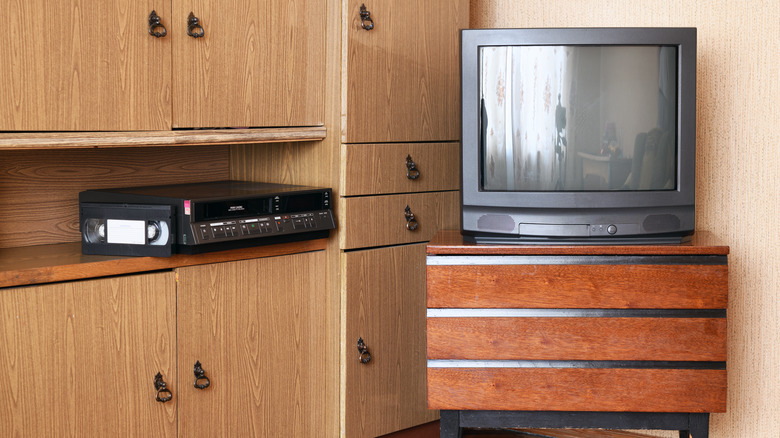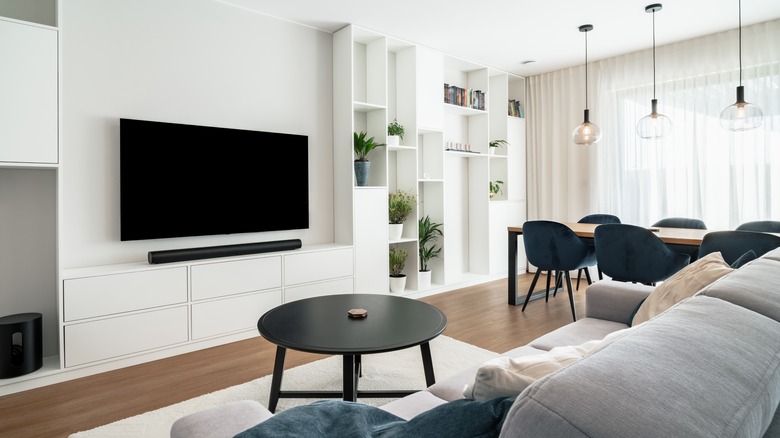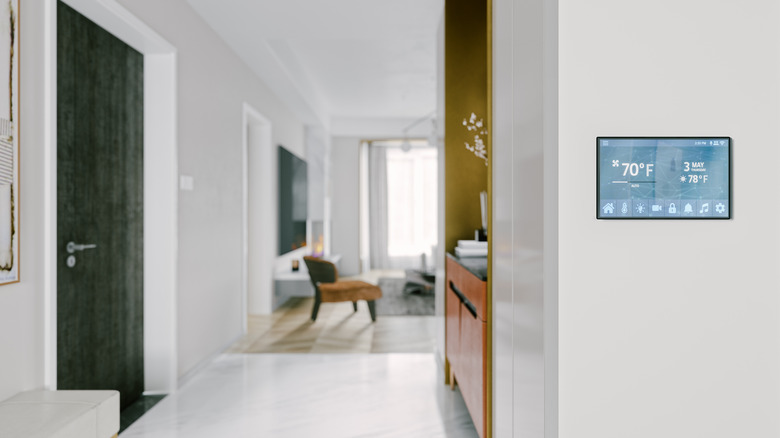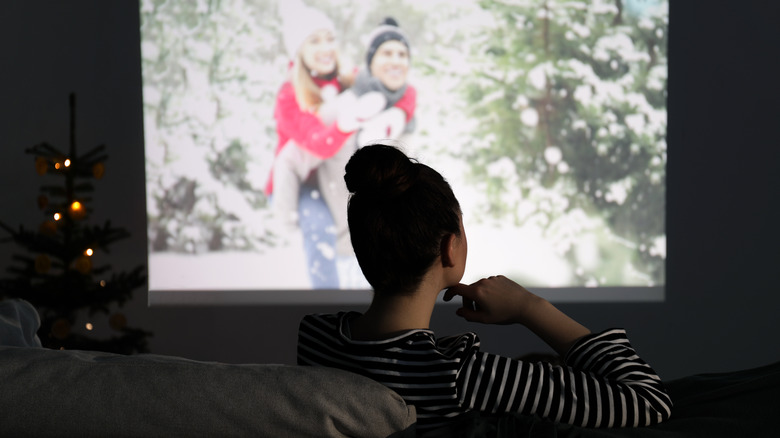How Right Were 1989's Predictions For The Home Of The 2020s?
There's always something new in the world of interior design. From decor to technology, things are always changing as industry experts continue to work on making the home more comfortable and usable. In a 1989 episode of the BBC series "Tomorrow's World," broadcasters and some researchers discussed their predictions of the biggest changes in homes by 2020 (via YouTube). Smart windows and outlet-less charging were some of the ideas, and while we've done a good job with getting some of them, there are others that we're still working on or waiting for.
For the broadcaster, something perhaps more important to note than the possible technological advancements was the concept of people having homes that worked for them. She predicted that homes wouldn't necessarily adopt the same changes and would be very different from each other. At the end of the day, it wouldn't be about the technology as much as it would be about those living in the home and what they want their spaces to be like.
Slim and sleek machines
If you can, think back to the 1980s and what technology was like then. There were TV sets, VCRs, stereos, speakers, and cabinets to store all the things to play, and that could be both in the living room and the bedroom. The different machines and their accompanying accessories occupied a lot of space so it makes sense that one of the predictions was home technology changing into sleek, simple forms.
The idea was that phasing out visible, chunky appliances and devices would give homeowners creative freedom when designing rooms because they wouldn't have to design around them anymore. Luckily, they were right and we now have speakers that are much thinner with the option of in-wall speakers which go directly into the walls to save space. We enjoy TVs that have music and video all in one, and we don't have to keep stacks of cassettes, CDs, or vinyl unless we really want to.
Home automation and sustainable energy
Another prediction was about automation. They predicted that lights, music, and heating would be not only touch-free but also based on personal preferences, and we do have that today. Home automation systems with voice control now make it possible to play music on demand (thanks to Alexa and Siri), and for lights to switch on and off when you walk in with adjustable brightness. We have smart thermostats that use machine learning and sensors to adjust the temperature to the favored and optimal setting, not just for our comfort but also for the benefit of the environment. As a whole, smart devices are also a good investment because they can add value to a home by about 5%.
Speaking of the environment, clean energy was another big prediction. They expected a big shift away from fossil fuel energy and prioritization of clean energy, which has come true in many homes all over the world. In efforts to mitigate climate crises and keep utility bills low, homeowners are always looking for what they can do to keep their homes sustainable – from investing in the right HVAC system to getting efficient appliances. The researchers specifically pointed out the use of a honeycomb material to heat buildings. It doesn't seem to be too common yet but there are smart honeycomb window blinds out there that can insulate windows and honeycomb ceramic fire plates that can reduce heat loss in a space from gas units.
Instant power and window glass technology
One interesting thing that they predicted would be standard was getting power from anywhere on the walls. Instead of having to plug appliances like hair dryers and toasters, for example, in specific spots because that's where the outlets are, they predicted that we would have a new type of charging plug that could just stick to the walls and get powered that way. It's been a few years past 2020 now and we can report that we haven't achieved this level of flexibility and it doesn't seem to be something experts are prioritizing. However, it might be for the best because outlets were never meant to be installed just anywhere due to different electric hazards.
Predictions were also made about window glass and the various possibilities. They foresaw window glass having various coats so you can change it to control the opacity and glare. Opaque Smart Glass is doing that with what they call a "privacy glass" and all you need to do is push a button to change the window from transparent to opaque. This isn't widespread yet, but we think it has a lot of potential. Another idea was that windows would be able to change into walls, decorations, TVs, or computer screens, but we haven't seen a lot out there about this. The closest we seem to have to smart window screens is projecting whatever we want to watch on a window with blinds closed or to the wall if there's no TV to use.



